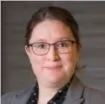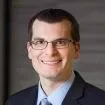- within Coronavirus (COVID-19) topic(s)
The interview below is part of a McGuireWoods series featuring interviews with C-suite leadership of private equity-backed portfolio companies.
Q: How do you ensure the platform's organizational culture is appropriately conveyed to potential targets?
RG: The main way is by involving our physicians in our merger and acquisition process. We feel it's important to have a few in-person meetings with targets before we go any further with the process. During these meetings, we're able to interact and get to know one another a bit and let the people we're meeting see doctors from our other geographies. We're trying to understand their culture and get them to know ours as well.
The single biggest thing we look at when we're considering a target is whether there's going to be a good cultural fit. That's important for our physicians and our management team, and I think it's one of the things that differentiates us from other organizations. We've been willing to pass on numerous opportunities because we didn't feel like they were a good fit.
Q: What was the best advice you ever received about running a business successfully and who gave it?
RG: The best advice I ever received was when I was in business school. We had a very successful entrepreneur come to the University of Texas to speak with us. The most memorable line he said was, essentially, "There was never a point in my career where I wish I had fired somebody later." What I took from this, and what has turned out to be true, is when you feel it's time to make a change, get on with it.
Secondarily, a mentor of mine told me a story that I now tell all the time. It goes something like this: A man gets married, and he's celebrating his first Thanksgiving dinner. His wife is making a ham. She cuts the ends off the ham before cooking it. The man asks, "Why do you cut the ends off?" She said, "My mother cuts the ends off her ham, and my grandmother cuts the ends off her ham, and it makes the ham taste better." The husband is perplexed. He speaks with his new mother-in-law and asks, "Why do you cut the ends off the ham?" She responds, "I cut the ends off the ham because my mother cuts the ends off of her ham, and it makes the ham taste better." The man is even more perplexed, so he goes to the grandmother and asks her to explain why she would cut the ends off the ham. The grandmother says, "I cut the ends off my ham because it wouldn't fit in my pan otherwise."
This story serves as a great reminder of the importance of looking up from what you've always been doing to see if there's a new perspective, challenge, approach — whatever it may be — you should be taking into consideration.
Q: What characteristics do you look for in leaders within your organization?
RG: We want critical thinkers who can move quickly and have strong analytics.
Q: How does a large, consolidated practice translate to improved clinical outcomes?
RG: It goes to the concept of groupthink or the "group vote." We rely heavily on collaboration and sharing of data across different platforms. We feel there's an exponential effect to this approach because we're able to measure data in multiple places, share it with our clinicians and foster an atmosphere of them talking and collaborating with one another.
In my experience, this produces the best clinical outcomes because you have the people providing the care speaking and sharing with one another. Frankly, an individual group does not provide the same results as members from multiple groups sharing information with one another. You can have organizational meetings and other industry affiliations, but they do not produce the same outcomes when collaboration is more actively facilitated and encouraged.
Q: Where do you see urology with respect to value-based care and bending the cost curve?
RG: On value-based care, I think urology is in the early stages, and it's going to take some time for value-based care to become commonplace.
One of the reasons I feel this way ties into where we are with bending the cost curve. At Urology America (UA), we've implemented a system that enables us to calculate the cost of care. We have proprietary costing information we're able to look at to determine the actual cost down to the CPT code level. We can show that by provider, look at variances across providers and truly understand the cost of our care.
I think that's a necessary and sometimes overlooked step before you get to value-based care. If you don't know what it costs for you to provide care, I don't know how you're going jump to value-based care.
Q: What do you believe is the most significant current challenge to UA, and what will be necessary to overcome it?
RG: I think the most significant challenge almost anywhere in medicine is the provider shortage. We're aging out our providers. If you look at the number of new providers coming in, it's not a match for the number of providers leaving. That is the single thing that probably keeps me up most at night.
The question we must answer is: How do we keep our providers involved long enough to address this shortage? What we're trying at Urology America as a strategy, and I think a lot of people have this idea, is to further utilize midlevel providers or physician extenders, but that's difficult with government regulations and requirements. I'm not sure we have a concrete answer yet for how we will solve our shortage problem.
Q: What healthcare trend will cause the most change in the next 10 years?
RG: It's probably an obvious answer: artificial intelligence (AI). I just returned from a conference where they talked about AI. Maybe the most meaningful thing I heard is that AI is exponentially more expensive and difficult as you move up the curve to accuracy. The example shared at the meeting was that when you use ChatGPT today, it's right maybe 50-60% of the time. That may be fine for some industries and individuals, but the challenge is that, as you look in arenas like healthcare and manufacturing where you need accuracy of 99.9%, the cost and computing power requirement are likely to be immense.
While there are undoubtedly challenges with AI, I do think it can bend our cost curve. There's so much work in healthcare that is not the crux of what a provider was trained to do, whether it's refilling a prescription, looking at medication interactions or scanning a family history. There's a lot we can continue to automate.
Automation of AI should have the biggest impact for us. How exactly that's going to look, I don't know, but it is something I think will greatly help. If we can get this right, I think it will help address the challenge of our current healthcare shortage.
The content of this article is intended to provide a general guide to the subject matter. Specialist advice should be sought about your specific circumstances.


